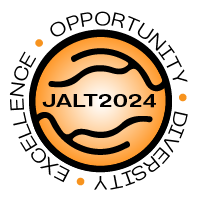12 June, 2010 - Ken Gibson
How and why to improve reading speed
Ken Gibson
Seeing a student's T.O.E.I.C. scores improve dramatically with "non-stop reading" led Gibson to further research, which convinced him of its validity as a way to ensure greater retention of the material. Reading too slowly results in not getting enough information to engage the whole mind simultaneously and productively; speeding up results in more understanding because more information is immediately available to build better images to effectively process input.
A physical challenge, reading speed needs to be addressed before comprehension. Skip the painstaking and disruptive process of looking up all new vocabulary—a lot can be understood through context if the input is fast enough to engage the whole mind. Fifteen to twenty contacts with a word are enough to get it from short-term to long-term memory, which is the best place for it.
Introduced first at a company and then a university, Gibson's program starts with testing reading speed and comprehension, leading to explanation and discussion of their relationship and introduction of strategies for improving both simultaneously, as well as techniques of imaging, predicting and dealing with unknown vocabulary. As an immediate indicator of marked improvement, cloze testing is very motivational-- as well as useful for course grading.

